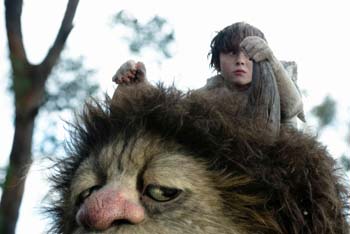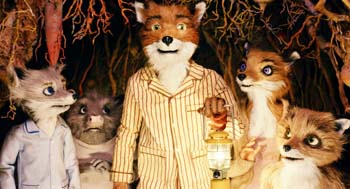There must be some adage among entertainment agents that when all else fails, celebrities can’t go wrong by writing a children’s book. Why might John Travolta, Ricky Gervais, Madonna, and Jimmy Buffett (among many others) all try their hands at this genre? A cynic might say: “because it sounded easy.”
Ever since John Newbery published A Pretty Little Pocket-Book in 1744, children’s lit has been a reliable market for purveyors of entertainment and education. Along with each copy of the Pocket-Book, children received a ball (for boys) or a pincushion (for girls), neatly linking the commercial with the didactic. Newbery’s marketing savvy paved the way for the industry which since 1922 has granted authors an award in his name.
An obvious, yet still peculiar, feature of the children’s book industry is that its primary audience does not also produce the bulk of the work. For other demographic categories (race, for instance) the creators of the works are also their consumers. Not so with children’s literature. This puts adults in the potentially hazardous position of projecting themselves into the child’s mind. The most skillful writers of children’s books manage to convey ideas and create worlds pleasurable and enlightening to the child audience which are also acceptable to adult guardians. The less skilful (see Travolta, et al) kill pleasure with overly-insistent instruction or technical ineptitude.
This past film season has seen two fascinating attempts to bring classic children’s books to the cinema. Where the Wild Things Are and Fantastic Mr. Fox are the latest films by two hipster directors, Spike Jonze and Wes Anderson. Both helped define the attitudes and styles of American independent cinema of the 1990s. Both are self-taught cinephiles. And, oddly enough, both are themselves childless.
The conventional wisdom about successful young artists is that they are self-aggrandizing narcissists, detached from the real world and living only through their films. Sharon Waxman reinforced this perception of directors like Jonze and Anderson in Rebels on the Backlot (Harper Entertainment 2005), which chronicled the careers of six leading directors of the 1990s. But we can get beyond this stereotype when we see that Jonze and Anderson, while working in the constraining genre of children’s films, have both done work that is well crafted and deeply personal.
The works they have adapted present serious challenges to the feature-length format. Maurice Sendak’s Where the Wild Things Are is primarily a picture book, notably winning the 1964 Caldecott Award. With only about three hundred words in the original, producing a ninety-minute running time sounds like a prescription for piles of deadwood and filler. The screenplay was coauthored by the ever-adventurous Dave Eggers, whose literary experiments in the 1990s revolutionized American prose. Eggers has exploited our received notions about the nature of narrative—its relation to autobiography, its means of publication, and even its appearance on the page. For instance, Eggers’s first major book, A Heartbreaking Work of Staggering Genius (Simon and Schuster 2000), was an account of his parents’ deaths that involved people from his own life talking directly to the reader. The appended epilogue was printed upside-down on the back cover, requiring the reader to flip the book over and read back to the end of the main text. Remarkably, Eggers’s experiments avoid becoming merely postmodernist parlor tricks, largely through his persistent, frank sincerity.

The most striking liberty taken by Jonze and Eggers in Where the Wild Things Are occurs in the dialogue. In the film version, the Things are far from the non-verbal creatures in Sendak’s book. The Jim Henson Creature Shop designed incredibly detailed puppet suits with wonderfully expressive faces, and the conversations of these creatures seem to overwhelm the simple charm of Sendak’s vision. The voices of the creatures are distinctly human and are performed by celebrity actors (James Gandolfini, Chris Cooper, Paul Dano, Catherine O’Hara, Forest Whitaker, etc.). Their speech patterns avoid any bestial qualities, remaining instead like the sullen, sad, or grumpy people they seem to contain. The effect of these voices along with the peculiar choice to give them human names—Carol, Douglas, Alexander, Judith, Ira, KW, etc.—creates a jarring effect that declares its distance from Sendak’s book more forcefully than the extended portion of the film that takes place in Max’s home before he boards his tiny boat for the island of the Wild Things. To my ears, these voices remain the least satisfying part of the film since their human inflections and phrasings separate the voice from the creature.
However, their tonalities and abundant dialogue have a thematic resonance that would be lost if they merely growled and grunted. The first part of the film shows Max exercising his dissatisfaction with his broken home (Dad is gone, Mom has a new boyfriend) by building a snow fort and terrorizing his older sister’s friends with snowballs. The friends’ retribution inevitably goes too far, pushing Max to the point of angry tears. He responds by dousing his sister’s room with water, destroying the gifts he has clearly made for her during happier times. His rage is conveyed through frenzied hand-held camera work that recalls Jonze’s roots in videos for skateboarding, music, and bull-riding.
This opening sequence, which gives the back-story lacking in Sendak’s version, works as well as it does because it mirrors so closely the events on the island of the Wild Things, from their famous Wild Rumpus to their fort-building and dirt-clod fight to their general destructiveness that ruins all the things they love best. In fact, Where the Wild Things Are may be the best exploration of a child’s anger in a children’s film. Jonze and Eggers capture so well the exasperation and seemingly inexplicable rage that appears in children coping with a world too difficult to process in any other way.
When adapting Fantastic Mr. Fox to feature-length, Wes Anderson had a somewhat less daunting task. Roald Dahl’s 1970 novel is a chapter-book for young children. Classic works like James and the Giant Peach, Charlie and the Chocolate Factory, and Matilda all have been successfully adapted into films, usually keeping Dahl’s penchant for weirdness but not retaining all of his cruel wit.
Anderson’s adaptation strives for utter faithfulness (though with some additional characters and adjustments to Dahl’s more elliptical ending), which is unsurprising for two reasons. First, Anderson says that a copy of Fantastic Mr. Fox was the very first book he personally owned. It was not a family book but was his alone, and he read it countless times with the pride of ownership enhancing his entry into the private world of Dahl’s fantasy. And secondly, Anderson may be the most detail-oriented filmmaker alive, rivaling even the great control-mavens George Lucas and James Cameron. Instead of using today’s reigning medium for children’s films—pure digital animation—Anderson decided upon stop-motion shot at twelve frames per second (rather than the typical twenty-four) to emphasize the lurching quality of old-style stop-motion. Anderson has said that he initially thought that he would be less involved with the daily production of the film given the technical requirements, but in fact the use of pliable figurines increased his ability to control the appearance of every shot, even every frame of the film.
Anderson’s hyper-attentiveness to detail can raise charges of mere formalism, and some critics find the emotions of his films too cool and the performances, sets, dialogue, and costumes too stylized. But I think this view of Anderson misses how each of his films is so intensely personal. To cite just one detail, he had his own tailor design the suit that Mr. Fox wears throughout the film in the same cut and from the same corduroy Anderson himself wears.

Fantastic Mr. Fox is essentially a deconstructed heist film, hearkening back to Anderson’s first feature Bottle Rocket (1996). During a chicken thieving misadventure, our titular hero (with the voice of George Clooney) promises his pregnant wife (Meryl Streep) that if they escape he will settle down and give up his criminal ways. Cut to several years later—with the first intertitle in a running gag about calculating human time versus fox time—where Mr. and Mrs. Fox inhabit a quiet hole with their son Ash (Jason Schwartzman). The ostensible cutesiness of this scenario is undercut by many nicely acerbic touches. Mr. Fox admits to a friend that he is suffering a mid-life crisis, plagued by thoughts of “existentialism.” This marks perhaps the first time the word “existentialism” has appeared in a children’s film. Mr. Fox’s middle-age ennui does not prevent him from viciously devouring his breakfast in one of the film’s several reminders that much like the Jonze movie, Anderson is dealing with wild creatures. Retaining the viciousness of the story—broken goose necks, drunken farmers, tails lost to gunfire—shows a faithfulness to Dahl’s vision. For Dahl, the child’s mind need not be sterile or sentimental. Anderson does not go as deeply as Jonze into the anger of children, but he maintains a reality where dangers are real, injuries are likely, and where “existential” dissatisfaction truly threatens the basic goodness of a life.
What each of these films demonstrates is an enthusiasm for the medium, not just in terms of its capacity for story-telling and characterization, but for the very means of production. Both films call attention to their craft—Jonze through his guerrilla-style camera movements and Anderson through rigorous formalism and self-conscious attention to detail. Calling attention to the auteur behind the work could open them up for criticism: they seem to be in love with the form of filmmaking at the expense of the film itself. But I think that this charge would be short-sighted. I would rather have the distinctive, engaging voice of a hipster auteur than the non-descript filmmaking-by-committee style found in many Hollywood productions. Jonze and Anderson might be Lost Boys, akin to other eccentric 1990s cinema geniuses like Quentin Tarantino and Paul Thomas Anderson. But they have managed to make the films that their peers’ kids might watch—and this accomplishment is anything but easy.
Charles Andrews is Assistant Professor of English at Whitworth University.













